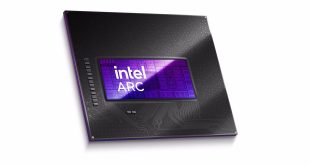Whenever most people say Fermi, they think immediately of Tessellation and with good reason. Tessellation involves taking simple geometry and making it more complex and during the process remove angular silouettes on game objects. Smoothing out varying levels of detail is also an added bonus – this means as you approach an object, extra detail can be added in the most realistic manner by the game developer without jarring intrusions ruining the immersive experience. Additionally developers can create geometrically enhanced surfaces reducing the requirement to use bump maps and parallax occlusion maps to fool the naked eye into thinking a surface is textured and rough, rather than flat and smooth.
Obviously with Tessellation the demands are higher on a graphics core and while both nVidia and ATI have increased the power of their pixel shading hardware there has been not so much focus on vertex, geometry based improvements.
This brings us to the biggest difference between both ATI and nVidia hardware – their implementation of Tessellation. ATi use a tesselator which feeds two rasteriser units and nVidia's Fermi design has 16 tesselator units with four rasterisers.
The nVidia solution also has the world's first Scalable Geometry Architecture, they state that the GTX 480 has up to 8 times faster geometry performance than the last generation single design card leader, the GTX 285. Shared memory triples from 16kb to 48kb and there is an added 16kb of Level 1 Cache.
Above you can see the nVidia Fermi architecture. The GigaThread engine feeds the data across four Graphics Processing Clusters and these each have a raster engine as well as four stream processor clusters and four Polymorph Engines. Raster and Polymorph engines are new and the implementation of these basically forms the foundation of Fermi. Tessellation needs to feed data back into the front end which means if it used the same unit as before (handling vertex fetching, rasterisation and triangle assembly) it should lead to data stall.
Fermi can process two kernels together as it is a Multiple Instruction, Multiple Data design. If data has to be processed then it can feed different streams simultaneously without causing delays in data processing. In theory, real world benefits include GPU AI and Fermi processing combined with traditional rasterisation without any hitching.
 KitGuru KitGuru.net – Tech News | Hardware News | Hardware Reviews | IOS | Mobile | Gaming | Graphics Cards
KitGuru KitGuru.net – Tech News | Hardware News | Hardware Reviews | IOS | Mobile | Gaming | Graphics Cards




Heck. the OCed H5870 from XFX really gives it a close call at times. nice review
Performance of the GTX 480 is impressive but I am concerned about the temps, nice to get another confirmation how hot it runs. you would really need a top top case for this puppy.
4 out of 5 seems slightly generous, no? The noise, heat and power requirements alone are mental.
Maybe 4/5 is too high, but this audience I dont think care about saving 10 bucks on electric, or dealing with a bit of fan noise, they aint watching movies with this power house.
They are good cards, but they need new cooling solutions, wont be long before that happens.
Thanks, first one ive seen with the XFX Black edition in the mix. very very close they are too. I think id opt for the HD5870 BE due to the noise reductions and lower power consumption.
Sam the only issue is people buying these I dont think care about a bit more power consumption and some more noise. The heat is a bit frigthening long term, but it will probably be ok. Could double up in the morning to cook your bacon and eggs too. added bonus 🙂
I dont care if Steve Jobs and Bill Gates had me tied up in an office with a wet lettuce and a swedish stripper. 90-105c is not good for any electricial component over a year. These will fail, just like the X2s before them did for AMD.
It’s the fastest single chip, but not the fastest single card. The GTX465 and Radeon HD5850 will hit 60fps in most games at 1920×1080. Can’t see a market for the 480/490. But the scores are tasty as much as the card is toasty!
Wicked review Z, thanks 🙂
No doubt its the fastest single core card on the market, but its getting there by really just sucking in as much juice as possible and making a racket while doing it. I have never heard one in person but going on multiple reviews ive read its quite noticeable.
Still, I wouldnt turn one down, but I still think the 5870 is the card to get. Overall, its quieter, more efficient, clocks well and still gives stonking performance.